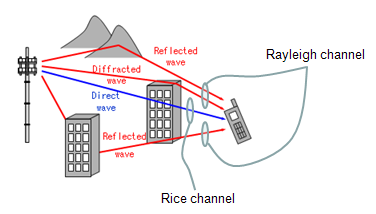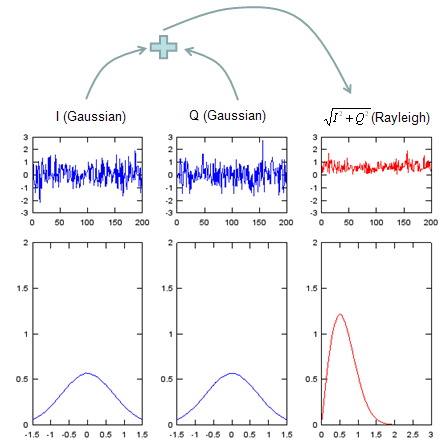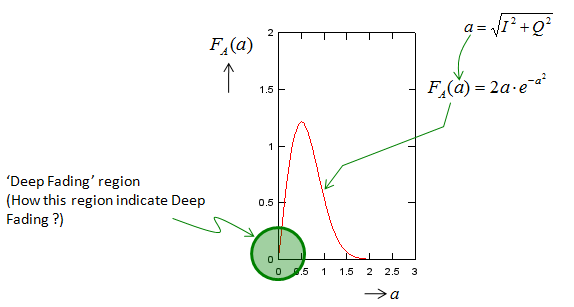|
4G/LTE - Channel Model |
||
|
Rayleigh Channel Model
The Rayleigh Channel Model is a statistical model used for simulating mobile radio systems, particularly beneficial in representing multipath fading environments. In this model, it is assumed that signals reach a receiver from various directions without a clear line of sight. (NOTE : If there is a dominant line of sight, Rician fading may be more applicable.)
Also, in this model, we assume that the magnitude of a signal that has passed through the channel will follow a Rayleigh distribution. The model considers only the envelope of the received signal strength, thereby neglecting the phase of the signal.
Intuition about Rayleigh Distribution
Simple definition of Rayleigh Channel is a channel which shows Rayleigh distribution of power profile as shown below. (See Rayleigh Distribution section for mathematical definition of the distribution).
Just for your reference, I put down an example of Gaussian channel as shown below.
Why is this distribution important ? In wireless communication, it is important because this is very important modeling for faded channels in wireless communication. In most cases, the channels for reflected path is modeled in Rayleigh model as shown below.
Signal Generation for Rayleigh channel
There are a couple of ways to generate the signal for Rayleigh channel. The simplest way is as shown below and overall procedure is as follows. i) Generate a random signal with Guassian distribution ii) Generate another random signal with Guassian distribution iii) Combine the signal i) and ii) to make a complex signal. iv) Take the magnitude of the complex signal and the distribution of the magnitude value follows Rayleigh distribution.
Click here to download Matlab/Octave code for the plots shown above.
Mathematical Presentation of Rayleigh Channel
A simple, one-dimensional representation of the Rayleigh distribution is as follows:
If the real and imaginary parts of a received signal are modeled as independent and identically distributed (i.i.d.) Gaussian random variables, then the amplitude (or envelope) of the signal, R, can be represented as follows:
R = sqrt(X^2 + Y^2),
where X and Y are zero-mean Gaussian random variables with equal variance. R represents the magnitude or the envelope of the signal. In wireless communication like LTE, X and Y can be I and Q data.
The probability density function (PDF) of R (the envelope) is given by the Rayleigh distribution as follows:
Rewriting the equation in terms of
p(r) = (r / σ^2) * exp(-r^2 / 2σ^2), for r ≥ 0,
where σ^2 is the variance of the Gaussian random variables I and Q, r represents the envelope (magnitude) of the signal. In a wireless communication system, σ^2 is typically proportional to the average received power, which depends on factors such as the distance between the transmitter and the receiver, and the power of the transmitted signal.
|
||




